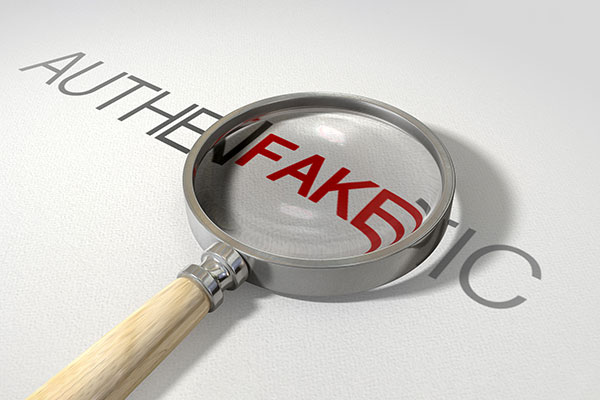The global counterfeiting problem is a multi-headed monster that continues to grow.
We heard about counterfeit PPE products that seemed to be everywhere during the pandemic, putting the lives of health care workers in danger. Demand was so high for these products that counterfeiters came out in full force to take advantage of demand volumes and high profits. Meanwhile, counterfeits of industrial and consumer products never slowed. Counterfeiters targeted industrial products, electronics, aerospace, metals, and other industries because shortages and disruptions in deliveries created opportunities.
Awareness of counterfeit parts and products has also increased in industrial procurement departments and all along the supply chain, yet counterfeiters are not deterred. Counterfeiters have changed tactics and their pricing to continue to fool consumers and industrial buyers.
I recently spoke with Keri Kammel, the Director of the Anti-counterfeiting and Product Protection Center at Michigan State University (visit the SCMR Podcast) The A-CAPP Center’s research indicates that global counterfeiting is increasing at an alarming rate around the world. In the past, the majority of counterfeits came from China, but with many companies moving out of China now, the counterfeiters are moving, too. There is a significant rise in counterfeits in countries including Vietnam, Thailand, Turkey, India, and Pakistan.
Counterfeiters also operate in the U.S. Some of these counterfeiters operate in grey markets where goods are sold as legitimate products with legitimate labels.
Every time I get on an airplane, I wonder if all the electronic parts and the avionics are legitimate or counterfeit…here’s hoping they are legit. This week, a company operating in New Jersey and Florida was caught selling $1 billion in fake Cisco electronics via 15 Amazon storefronts and 10 eBay stores. Counterfeits are also a huge problem in cosmetics and pharmaceuticals and may be dangerous to your health.
Mis-alignment of goals
Most procurement professionals are evaluated on annual savings achieved through securing new suppliers and negotiating better prices. These goals may not be in alignment with a company’s desire to buy only legitimate goods. Industrial buyers are caught in the middle – between the incentive to achieve savings and the requirement to buy legitimate parts.
Unfortunately, if your incentive is savings, then you’ll be looking for the lowest price. Even Amazon has developed industrial buying services so that buyers can access a special portal to take advantage of discounts. That’s where counterfeiters step in and trick the buyer into procuring non-legitimate parts at discounted prices.
Maintain control over your supply chain
The only way to control counterfeiting is to maintain tight control over your entire worldwide supply chain and enforce discipline in verifying supply chain partners and products. This means verifying and monitoring all suppliers and sub-suppliers (tiers 1, 2, 3), distributors, subcontractors and contract manufacturers.
It simply isn’t good enough to show up at a supplier location once a year and hope for the best. Companies sourcing in China and other low-cost countries should go often and review the production of parts. There is no substitute for attention to detail in every supply chain link. If travel is restricted because of the pandemic, companies need to step up their incoming inspection of parts, increasing sample sizes for testing.
Finding and fighting counterfeiters is hard work and a relentless task. Take nothing for granted. Know your supply chains from start to finish. Verify and monitor every step of the way.
SC
MR


Latest Supply Chain News
- Retail sales see gains in October, reports Commerce and NRF
- Balancing green and speed: Home delivery insights from the pandemic era
- AdventHealth named top healthcare supply chain by Gartner
- Geopolitical readiness in supply chains: Strategic challenges for leaders
- Unlocking retention: The role employee engagement plays
- More News
Latest Podcast

 Explore
Explore
Business Management News
- Retail sales see gains in October, reports Commerce and NRF
- Balancing green and speed: Home delivery insights from the pandemic era
- AdventHealth named top healthcare supply chain by Gartner
- Unlocking retention: The role employee engagement plays
- Can supply chain managers embrace an entrepreneurial mindset?
- Challenges to ESG reporting
- More Business Management
Latest Business Management Resources

Subscribe

Supply Chain Management Review delivers the best industry content.

Editors’ Picks




